Warming cities may see more rain — and frequent flooding
Scientists are seeking to understand why and how to mop up excess precipitation
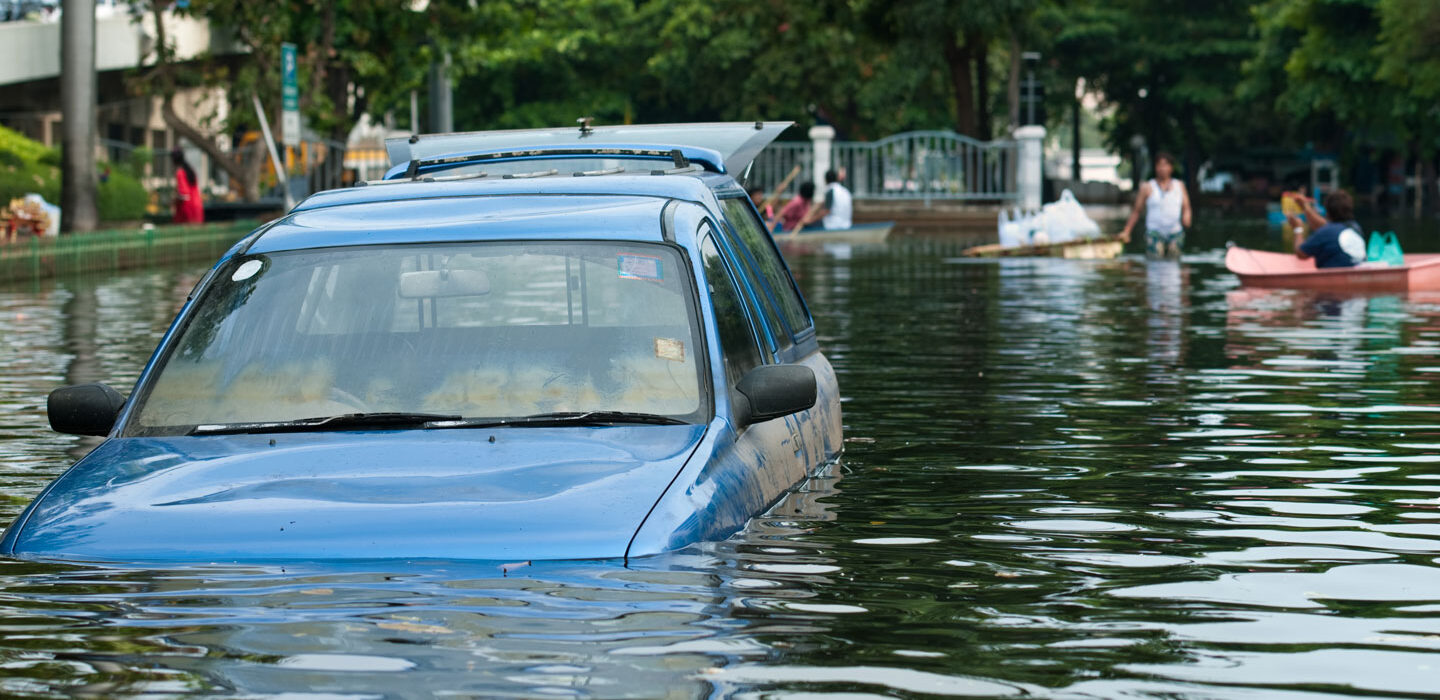
Cities build systems to take away excess water when it rains. But as urban areas get hotter — and wetter — those systems are more likely to fail.
gdagys/E+/Getty Images Plus
Atlanta, Ga., was rainy in September 2009. Very, very rainy. Water poured from the sky for days. In one 24-hour deluge, more than 53 centimeters (21 inches) of rain fell.
Normally, rain washes off city pavement into gutters. Those gutters lead to storm drains. And storm drains should channel the water through pipes to local rivers and streams. But in 2009, the drains weren’t big enough.
Roads became rivers. Homes flooded. Roller coasters at the local Six Flags amusement park became submerged. The flood did an estimated half-billion dollars in damage. Tragically, 10 people died.
Most of the rain was due to incoming storm fronts. Rain clouds gathered over hundreds of kilometers, due to winds blowing from hundreds or thousands of kilometers away. Marshall Shepherd initially had bet 2009’s excessive flooding was due to these “large-scale weather processes.” It was just the weather, right?
Wrong.
Shepherd is an atmospheric scientist at the University of Georgia in Athens. He and his colleague Neil Debbage studied the 2009 flood. They ran a series of models — computer simulations of real events. Atlanta always would have flooded that week, they found. But more rain fell on the city than natural weather patterns could explain — 10 cm (3.9 inches) more. Paved surfaces shoved water downstream. This increased what accumulated on the ground in some places by another 12 cm (4.7 inches). In other spots, they could trace back more than one-fifth of the total flooding to features of the city — the skyscrapers, asphalt and concrete.
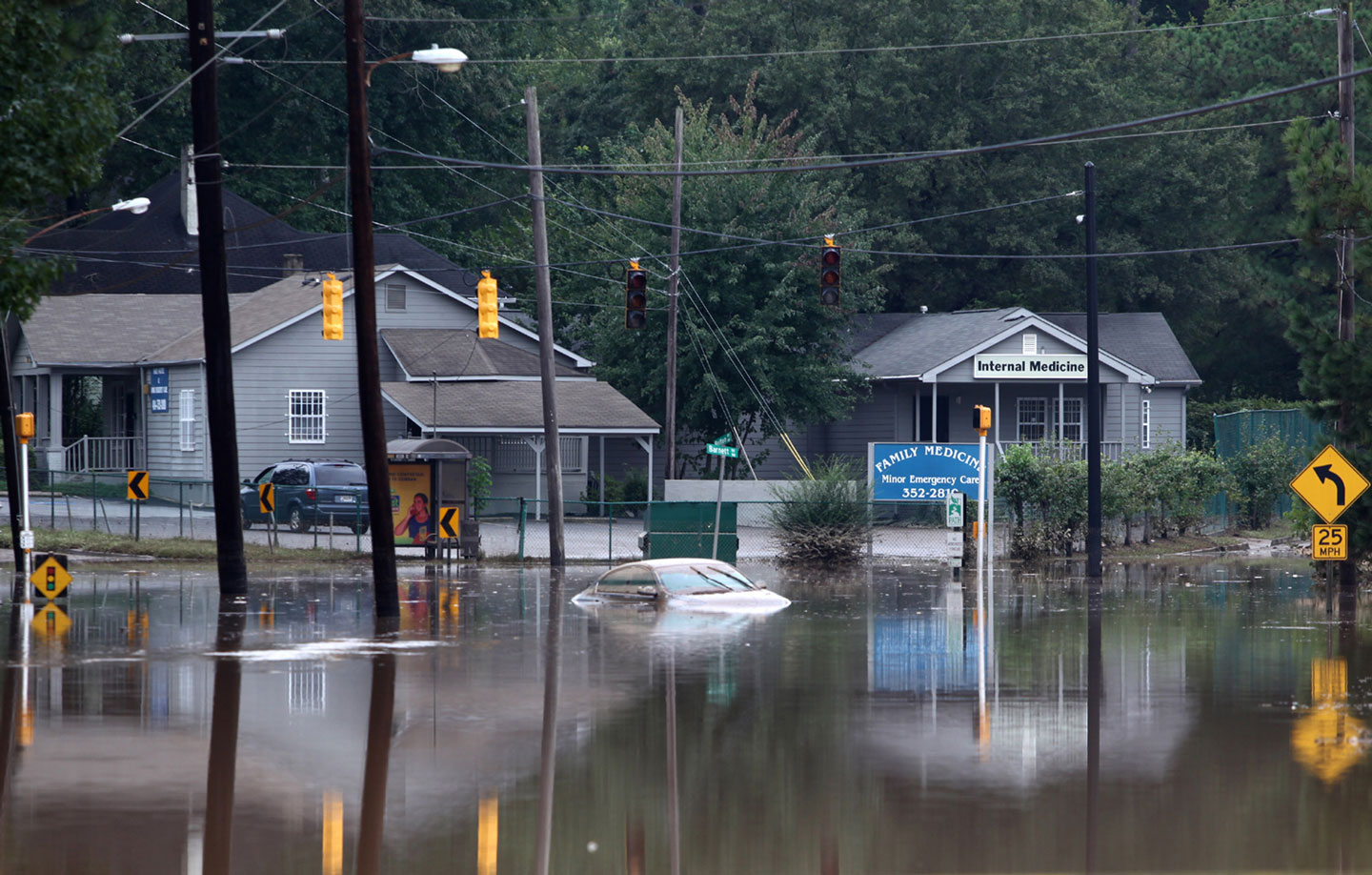
It was an example of the urban rain effect — the role that cities play in where and when rain falls. “Urban regions can not only initiate or modify rainfall in storms,” Shepherd explains. “They in some cases may enhance or amplify pre-existing rain systems that are caused by something else.”
Cities, he says, can make it rain.
As Atlanta and other already warm cities get even hotter, their heat can fuel rainstorms. That excess water can now fall on areas that are increasingly likely to flood. Scientists are working to find out what causes this urban rain. And by staring at storm drains and building basketball courts that flood, they’ve begun finding creative ways to help all that extra water flow away.
How the urban rat race feeds the water cycle
As water evaporates, steam begins rising high into the air. When it hits air that’s cool enough, this vapor condenses into tiny droplets. Little drops gather into bigger ones, grouping around “seeds” — airborne particles of dust or ice. We see those amassing droplets as clouds. Once the droplets get heavy enough, they fall back to Earth as rain, snow, sleet or hail. That water can then soak into the ground, fall on the ocean or join a river or lake. Eventually it evaporates, returning to the air once again.
Cities tend to be warmer than neighboring areas by around 0.5° to 3.9° Celsius (1° to 7° Fahrenheit). The bonus heat makes air circulation patterns around cities unstable. During the summer, this extra heat creates wind patterns and rising air that build new clouds or intensify existing ones. These clouds may then develop into rain storms. Scientists suspect that city surfaces of varying heights, like buildings, also promote the rising air that builds new clouds and fosters rain.
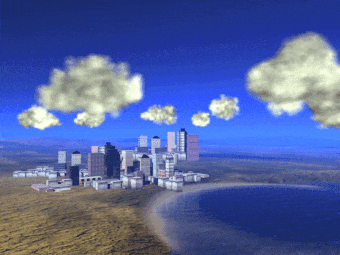
In this way, water from the ground cycles into the air and back again, over and over. Unless, that is, it falls onto a city.
Cities modify the water cycle in several big ways, explains Shepherd. One is their absorption of heat. In cities, pavement, concrete buildings and dark-roofed houses often replace trees and other vegetation. Trees used to cool the land. But roads and buildings now absorb and hold heat. This creates what’s come to be known as urban heat islands. These areas can be far warmer than the nearby countryside.
Cars, air conditioners and industrial activities also add heat to the city. This heat tends to leave cities at night. But the concrete and asphalt release their absorbed heat more slowly than soil or plants might. So the evenings remain warmer in cities than in nearby suburban and rural sites.
A city’s buildings, traffic and people also emit pollutants into the air. These aerosols can serve as the seeds around which cloud droplets form. Tall buildings also channel air upward, Shepherd explains. These currents push warm air up even further, where it can cool and condense to form clouds. Finally, “cities have been shown to cause storms to split and veer around them. We don’t necessarily understand the process,” Shepherd says, “but we’ve seen it happen.”
Those four things — hot cities, tall buildings, pollution and storm splitting — change if and where rain will fall across a city. “You need something to lift the air, you need the air to want to rise once you lift it,” Shepherd says. The hot city air wants to rise, and the buildings help hoist it up. Clouds begin to form. And where there’s enough moisture, he says, these conditions create bonus clouds and rain.
From tailpipe to thunderstorm
Over many studies, Shepherd and his colleagues have shown that some cities really do get more rain in certain places than would be expected. As winds push the forming clouds, those rains tend to fall slightly downwind of the city center. Houston, Texas, for instance, gets 25 percent more rain than the surrounding countryside.
Other scientists have confirmed the urban rain effect in places such as China and other parts of Asia. Hiroshi Okochi is one of them. He’s an environmental chemist at Waseda University in Tokyo, Japan. In one hour, heavy rains can drop 3 cm — or more than an inch — of rain. In Tokyo, he says, “the number of heavy rainfalls in a decade has almost doubled.”
Okochi is especially concerned with chemicals such as sulfur dioxide and nitrogen oxides. Tokyo has a very large port. The exhaust spewed by ships there produces about 70 percent of the sulfur dioxide in the air, he notes. Nitrogen oxide comes from vehicle tailpipes. In warm urban air, those chemicals react quickly with other particles in the air. Chemicals such as sulfuric acid and nitric acid form. These chemicals not only help to form clouds, but also to make the cloud water more acidic. Ever heard of acid rain?
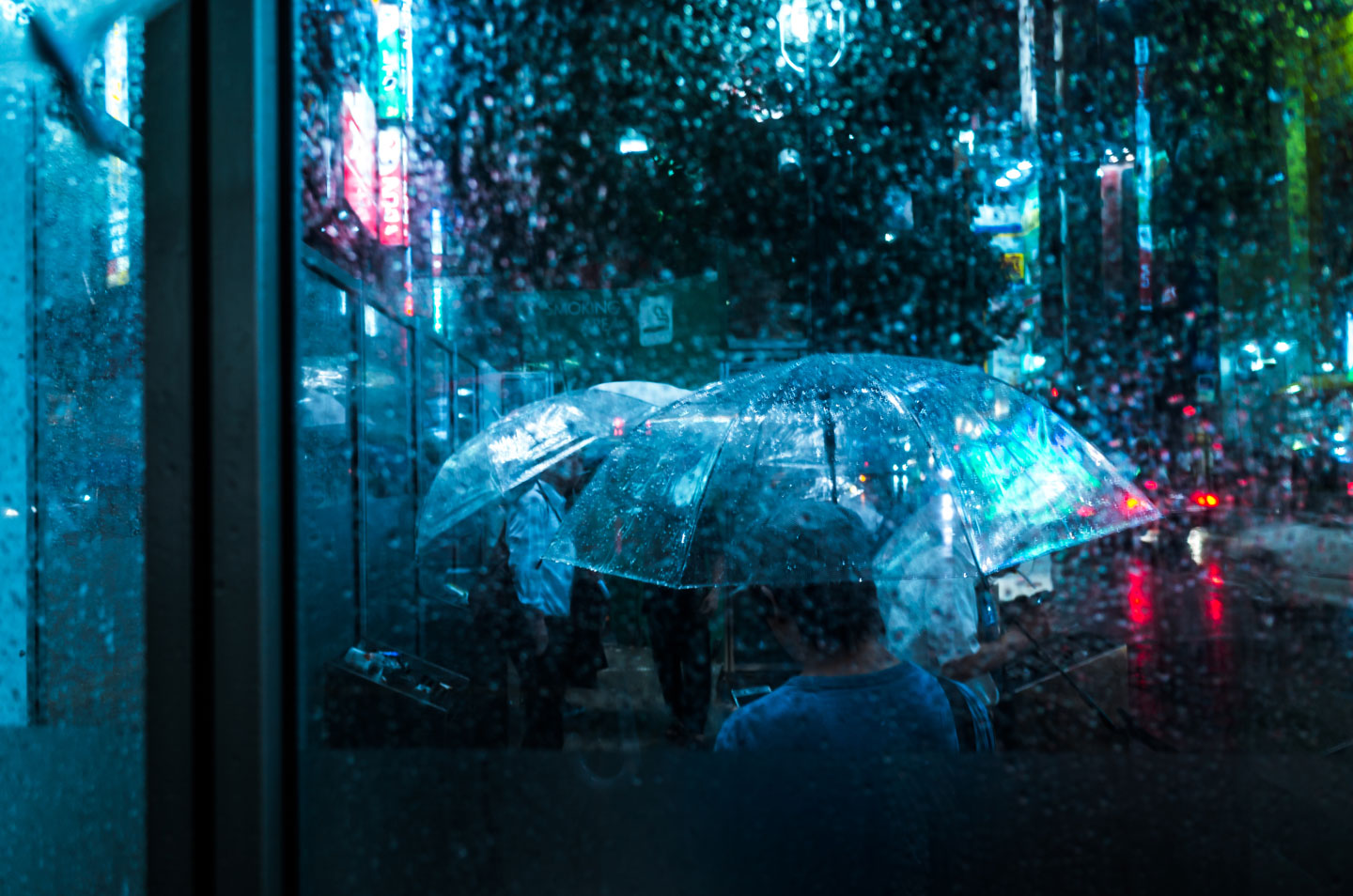
The mix of urban heat and air pollution has boosted rainfall over Tokyo, Okochi and his colleagues have found. Because of the air pollution, this heavy rain is more acidic than normal rain would be. The researchers published their findings three years ago in Atmospheric Research.
Once that rain falls, Shepherd notes, you hit the final problem: where it ends up. Unlike soil, paved surfaces don’t absorb rain. Instead, that water runs off of streets and into sewers and storm drains. When coupled with storms that have been strengthened by climate change, the result can be deep and dangerous floods. Like the September 2009 one in Atlanta.
The rains won’t fall evenly across a city. Some areas end up hotter and wetter than others. People who live in these spots will suffer more than those elsewhere. And those affected are more likely to be low-income and people of color, Shepherd and Debbage find.
This is partly because of history, Shepherd explains. Some of these people didn’t have access to more valuable land. “So they often get stuck in places that, you know, are more flood-prone.”
Rain, rain, flow away
In the spring of 2016, a group of students from Furr High School inspected the Houston street drains they walked past every day and sampled the drain water. These drains weren’t working very well.
Their neighborhood, Manchester, is right by the Houston Ship Channel. Factories and other industrial sites line this waterway. It’s an area that floods even after normal rains.
The teens were studying where storm waters went and how polluted they were. They also brainstormed how their neighborhood might reduce this flooding. They hoped to remove some paved lots and replace them with green spaces — park-like lands that could soak up extra water.
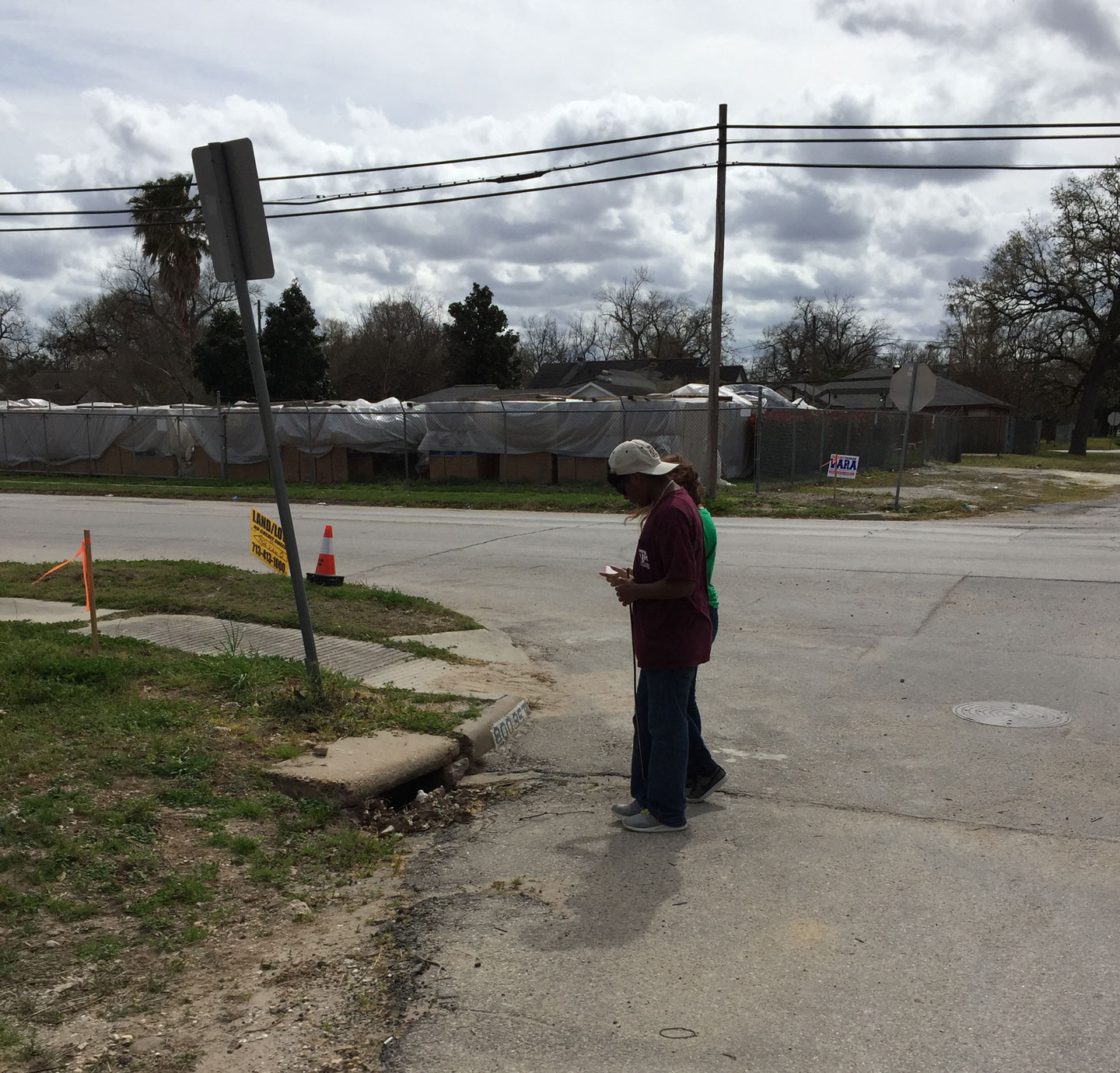
No matter where rain falls in a city, it has to flow somewhere. Often it ends up in a stormwater system. It’s a series of grates or holes cut into streets and gutters that collect water underground. Eventually, this water moves to rivers and streams. These systems are often neglected, explains Marccus Hendricks. “It doesn’t rain every day,” he says. “The systems are out of sight and out of mind.”
Five years ago, Hendricks was a graduate student at Texas A&M University in College Station. Back then, he and his colleagues mentored the teens as those students developed their plans.
Green spaces do more than limit flooding. They also make communities resilient, Hendricks says — better able “to adapt to changing circumstances.” The better communities can handle storm water now, the better they will be able to limit future disasters.
Hendricks published the work he did with the Houston students three years ago in the International Journal of Disaster Resilience in the Built Environment. At about the same time, his team also shared the lessons it learned in Landscape Journal.
Hendricks now studies environmental planning at the University of Maryland in College Park. “I owe my career to a crew of brilliant high-school students in the eastern end of inner-city Houston,” he says. One day he hopes those former teens will see Houston adopt their changes. Then their neighborhood may flood less often.
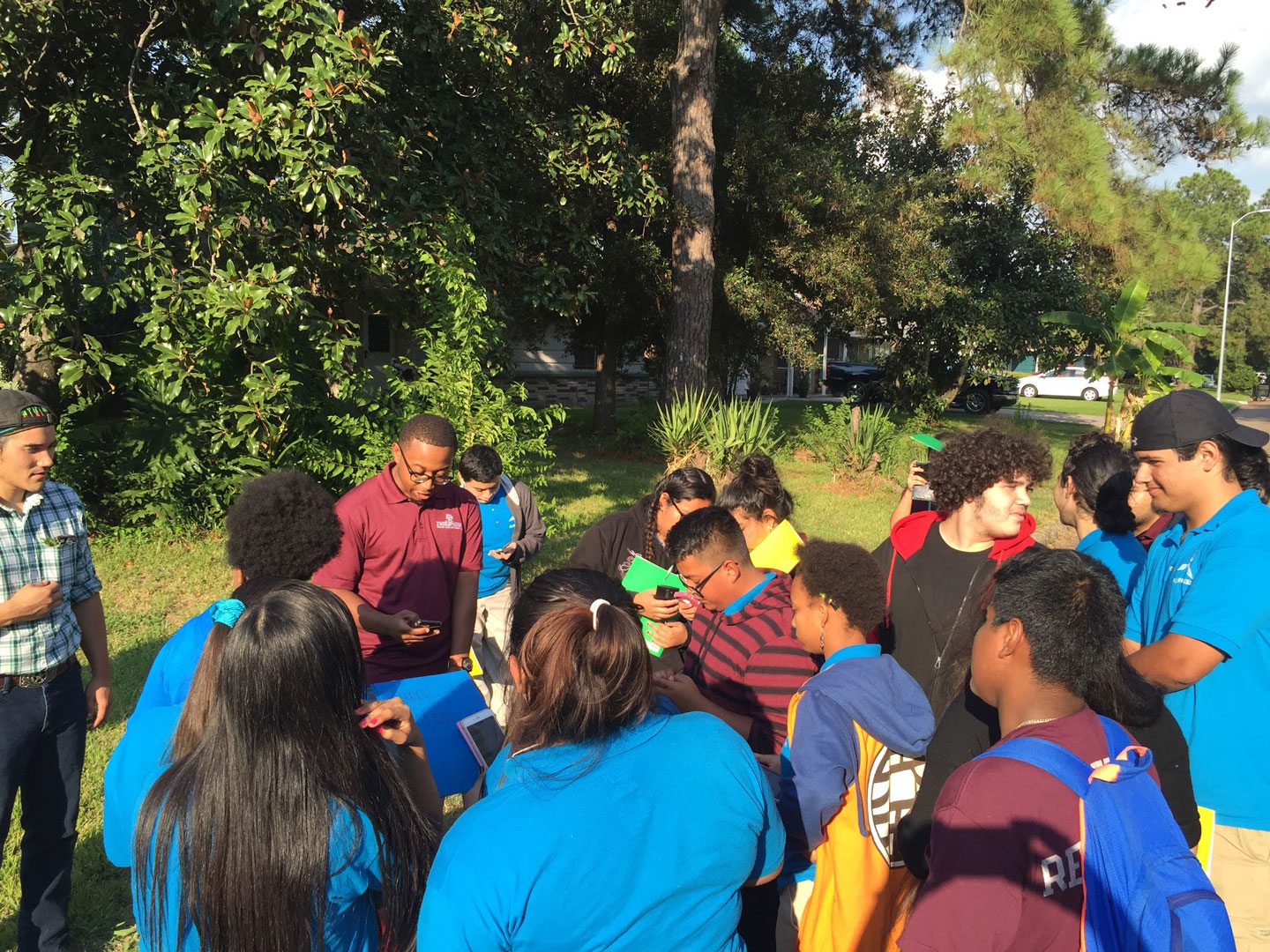
Preventing a flooded future
Water management has “been underground for a long time,” says Lauren McPhillips. Unless your basement or street is flooding, she says, “you don’t think about it. It’s happening to somebody else.” McPhillips is a hydrologist at Pennsylvania State University in State College. She explores how cities can manage extreme rains.
Some communities are installing pavements that allow water to run through them instead of over them, she says. There are also tree boxes in sidewalks with extra soil and pipes underneath — tiny rain gardens on a city street.
And in some places, she says, your basketball court or soccer field might flood — on purpose. “If we can design this basketball court to also hold water during a really big storm,” McPhillips says, “you can still play basketball 99 percent of the time.” But when severe downpours threaten, this site “might be able to hold back some water and prevent flooding.”
People can rebuild after floods, of course. They can clean polluted water. But it would be better if they didn’t have to.
“I think we don’t recognize the burden of having to be resilient,” Hendricks says. “Communities that have faced risk and lived at the margins of society for so long are inherently resilient.” But, he notes, there also is “a burden associated with having to bounce back.” Rebuilding costs money and time, which not every community has.
If cities are built well — with green areas, rain gardens and ways to slow the flow — they might be able to handle the bonus rain that cities can foster. City planners are “realizing that the storm sewer system designed a century ago can’t hold that water. They need something different,” says McPhillips. Storm water systems often don’t get rebuilt for decades, or even centuries. And science is now telling us that cities can no longer get by with storm systems designed to handle the rains they see today. They will need to plan for hotter cities and the more extreme downpours that are likely to occur 100 years in the future.







